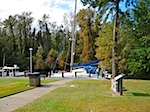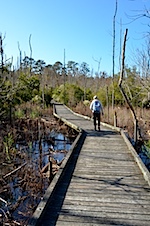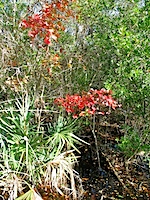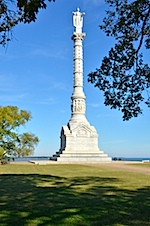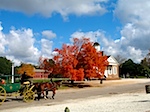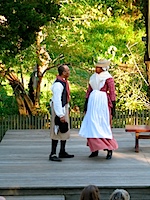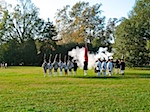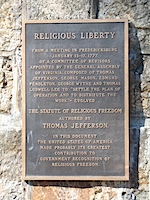Roanoke Island, Part 1
It turns out that while the **paved** highway 12 ends at Milepost 12 at Corolla, NC, the State of NC considers that the beach from there north to the Virginia line is Beach Highway 12: it’s a state highway: police cars, state highway regs apply, speed limits parking rules, etc.  Not only that, but about 8 or 9 miles up there, there is an unincorporated town named Corova (Caro[lina] + Virgini[A]) back in the dunes: a fire and rescue department, post office delivery routes, power lines, all set in the midst of these dunes and sand roads, as if it were perfectly normal to live out there where the only access is via the beach. Wikipedia doesn’t quite get it right , and Corova’s site is more of a promotional effort, but you get the idea: there are a massive number of HUGE houses built back there in the dunes, houses on the order of 5000+ sq. ft., which rent to large numbers of people, or a big family group, who share the cost for a week or more.
Not only that, but about 8 or 9 miles up there, there is an unincorporated town named Corova (Caro[lina] + Virgini[A]) back in the dunes: a fire and rescue department, post office delivery routes, power lines, all set in the midst of these dunes and sand roads, as if it were perfectly normal to live out there where the only access is via the beach. Wikipedia doesn’t quite get it right , and Corova’s site is more of a promotional effort, but you get the idea: there are a massive number of HUGE houses built back there in the dunes, houses on the order of 5000+ sq. ft., which rent to large numbers of people, or a big family group, who share the cost for a week or more.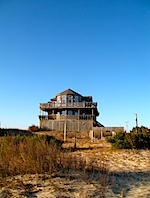 We took the two-hour trip and headed off in a 4-wheel drive to go see what you expect to be wild horses in a wild location, only to find them grazing on the lawns and under the carports of houses in a beach suburb; very dislocating! … The state road did not actually reach beyond Duck until 1957, and a large number of residents of Corolla commuted up the beach every day to work in Virginia, as it was (and still is) far shorter by that route than via the state highway system. Because there are now fences at the Virginia line (and at Corolla) to prevent the wild horse populations from expanding north or south, Virginia issued permits to 60 or so residents of Corolla who are still allowed to commute to their jobs via the beach and to pass through the gate in the fence at the NC/Virginia line.
We took the two-hour trip and headed off in a 4-wheel drive to go see what you expect to be wild horses in a wild location, only to find them grazing on the lawns and under the carports of houses in a beach suburb; very dislocating! … The state road did not actually reach beyond Duck until 1957, and a large number of residents of Corolla commuted up the beach every day to work in Virginia, as it was (and still is) far shorter by that route than via the state highway system. Because there are now fences at the Virginia line (and at Corolla) to prevent the wild horse populations from expanding north or south, Virginia issued permits to 60 or so residents of Corolla who are still allowed to commute to their jobs via the beach and to pass through the gate in the fence at the NC/Virginia line.
